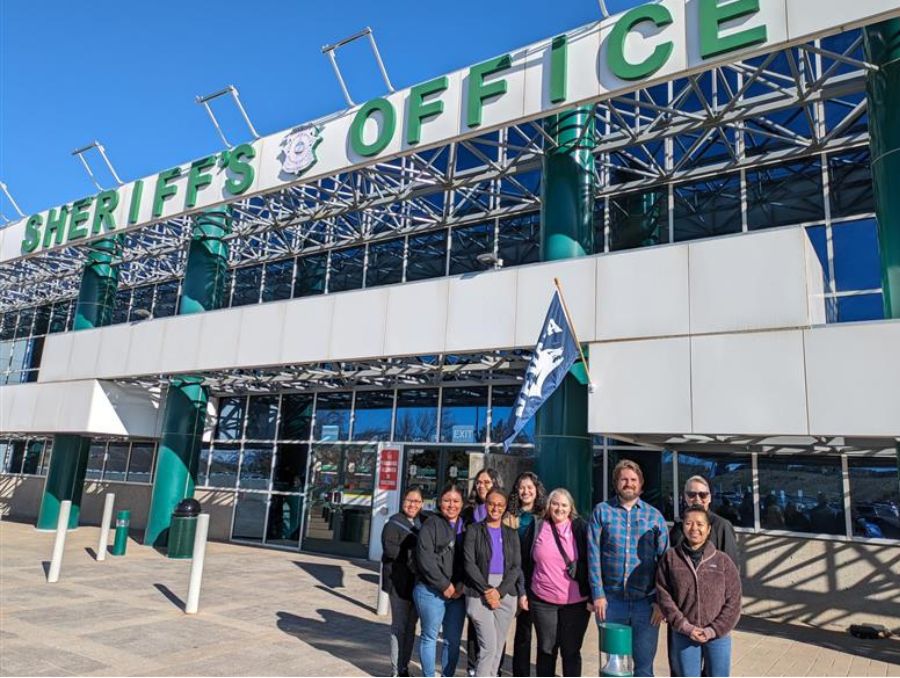Peter Goin has crafted an impressive career from an unceasing fascination with the interplay of light. His body of work includes 16 books, documentaries and exhibitions in 43 major collections, all earning international acclaim for their fusion of creativity and artistry with an exploration of the environment through a lens of history, architecture, urban planning and social and political sciences.
The University recognized Goin’s extensive contributions to scholarly research when he was named Outstanding Researcher of the Year last May. Goin’s influence in research was also recognized when he was inducted Sept. 27 into the Center for Advanced Study.
“Photography is a universal language that has a rightful place in research,” Goin said. “Research is a quest for knowledge. Photography articulates concepts of visual representation. My career is grounded in the scientific processes that use both laboratories and empirical data to establish scale, document events and explain ideas and phenomena that are not always easy to understand.”
In Nevada, Goin, a University Foundation professor of art, has found plentiful inspiration and an almost eerie juxtaposition of subjects from the desolate landscapes of the Black Rock desert to Lake Tahoe; the stillness of the Nevada Test Site to bustling gaming properties along the Nevada-California state line; and, precious water resources that are simultaneously coveted and controversial.
Goin was the first nonmilitary photographer permitted to document the test site. The haunting images, published in his book, Nuclear Landscapes, are a triumph for education and scientific revelation.
“Photographing the Test Site allowed me to ask a paradoxical question, ‘what happens — visually — to the landscape when you detonate a nuclear device?’” During his examination of the Trinity Site in New Mexico, Goin recovered small particles of Trinitite, sand-infused glass glazed by the intense heat of a detonated nuclear bomb and the less-tangible reinterpretation of language.
Before he made the photograph at the Hanford Nuclear Reservation titled Burial Gardens, the area was tested for plutonium contamination. “There is an inescapable irony of the name of the setting and the activity that precipitated it.”
Goin also explored nuclear annihilation in his 1998 KNPB documentary, Nuclear Monsters, an “amalgam” of Department of Defense footage and clips from popular science fiction films. The result is a provocative exploration of the human condition living with threat of nuclear war.
Although Goin records the environment around him in images, he remains most notably in his own words, “a student of the American landscape.” His book Humanature attempts to answer the questions, “Is nature an exportable, economic commodity?” and “is nature itself a social construction, a fiction?”
In the book Changing Mines in America, co-authored with University history professor Elizabeth Raymond, Goin looks at the cultural representation of the mining industry.
“The issue is underrepresented in contemporary research, yet absolutely everything we need in life depends, to some degree, upon extractive industries,” Goin said. “Once the ore bucket was a frequent symbol of an exploitive industry; now, wherever you go you see it on display. It has become sentimentalized and Americans are using it as a symbol of new, extractive wealth. Mining symbols reflect a growing technostalgia.”
Now Goin has turned his lens to the transformation of agriculture, or in his words, “the new nature.” Goin and Paul Starrs, a University professor of geography, are in production with A Field Guide to California Agriculture, due at the end of 2008 by the University of California Press. Goin’s photography will complement Starrs’ narrative, and a dedicated visual gallery is a publishing first in the series. Their previous collaboration included the 2005 book, Black Rock.
“Paul and I were surprised to learn that a comprehensive visual and textual field guide to California agriculture had never before been published,” Goin said. “It took two professors from Nevada to approach the subject because we had no vested interest in the industry.”
According to Goin, the field guide educates consumers about the importance of agricultural land and about the source of food itself, thereby providing a basic education that is necessary to make informed choices.
In fall 2009, the University of California Press will publish Goin and Starrs’ The Nature of California Agriculture, which touches on political implications, labor and ethnicity, and the organic movement. Shifting political winds and the emergence of the “back to the source” movement that invites consumers to grow and or harvest their own fruits and vegetables fascinates Goin.
“We have a growing consciousness as it relates to food," Goin said. "This project helps integrate the process of agricultural production and the choices that consumers make once they are educated about their food.”
Goin said he is pleased that his photography has garnered attention from other researchers.
“We tend to think of research in context of our own disciplines but it’s much broader,” he said. “I present myself as someone who does research using the language of the fine arts, asking questions. That’s the essence of research-based scholarship.”











